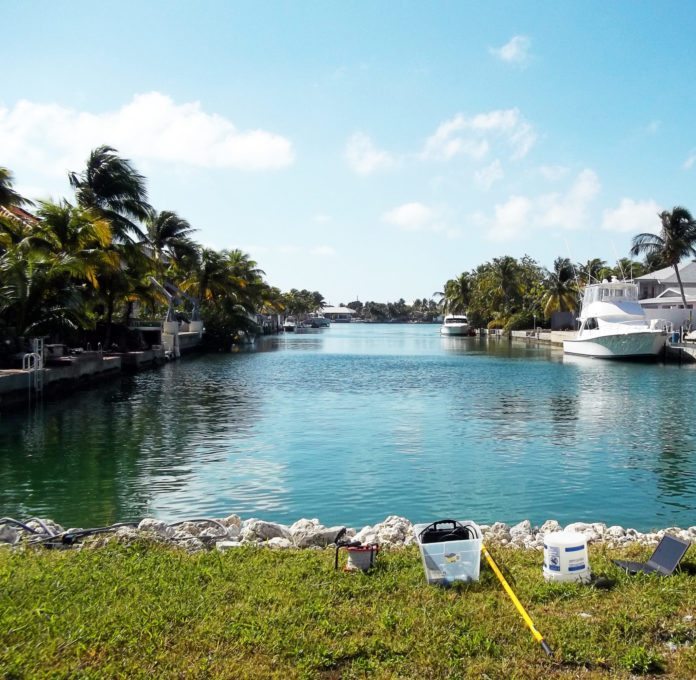In the 1970s, there were few regulations in the Keys when developers began dredging canals — first to create waterfront lots, and second to provide fill to build upon those same lots. Unfortunately, such tampering with the natural environment created long-term water quality problems in the Florida Keys.
Organic material such as seagrass gets trapped in the canals (some up to 30 feet deep), decays and takes oxygen from the water and releases methane and hydrogen sulfide. Water with low oxygen is seldom inhabited with marine life. The polluted water destroys shoreline habitat, especially mangroves, and the poor water is discharged directly into the nearshore waters of the bay and ocean. Other organic material, such as fish carcasses and lawn clippings, contribute to the problem as well.
“Treat your canal like it was your swimming pool,” said Rick Fraxedas, engineer and group leader of Monroe County’s canal restoration project.
He is part of a team of scientists and experts that are constructing the Monroe County Canal Management Master Plan, a plan to enhance the water quality of canals in the Florida Keys that began in 2012 after receiving a grant from the Department of Environmental Protection. Every canal in the Keys has been numbered, surveyed and analyzed. Currently, there is a pilot project underway in Big Pine Key in the Doctors Arm neighborhood and on Geiger Key on Boca Chica Road. The Monroe County project will cost $5 million for restoration of six canals.
According to Monroe County, there are 502 canals from Key Largo to Key West and two thirds of them have been rated as having “impaired” water quality. The county, federal and state government are doing something about the problem but community outreach is the first step of restoring the water quality in residential waterways.
“The stakeholders are the citizens. We need community outreach and involvement,” said Monroe County Sustainability Program Manager Rhonda Haag. She said homeowners need to be open to having surveys and construction on private property that will eventually lead to a clean canal.
There are five methods of canal restoration and some canals need a combination of treatments. The methods are: weed gates or air curtains; culvert connections; removal of accumulated organics; backfilling deep canals; and pumping. All methods are costly, however the first two methods are the least expensive.
“I estimate it will cost about $200 to $300 million to restore all the canals in the Keys,” Haag said, noting it was a “conceptual” number.
Haag said that as public involvement increases so do funding sources. To get involved go to www.monroecounty-fl.gov and click Canal Restoration located in the programs tab.
Methods of Canal Restoration
Organic removal is the removal of decomposed weed wrack (seaweed and algae) material present at the bottom of a canal depleting the dissolved oxygen and adding nutrients.
Weed Gates, air curtains and other physical barriers are designed to prevent floating, wind-driven seaweed from entering into man-made canals.
Culverts are installed between canals or between canals and thin strips of land separating bodies of water. Culverts improve natural tidal flushing.
Backfilling deep canals is the placement of clean backfill material up to an elevation of 6 to 8 feet below mean sea level. Backfilling promotes flushing and creates a conducive habitat for marine life.
Pumping Systems are pumps installed to promote water circulation within a canal and enhance tidal flushing. Water can be pumped from clean near shore areas to the back end of stagnant canals. A careful design is required to prevent adverse secondary effects such as re-suspension of sediments or bottom scouring.



























